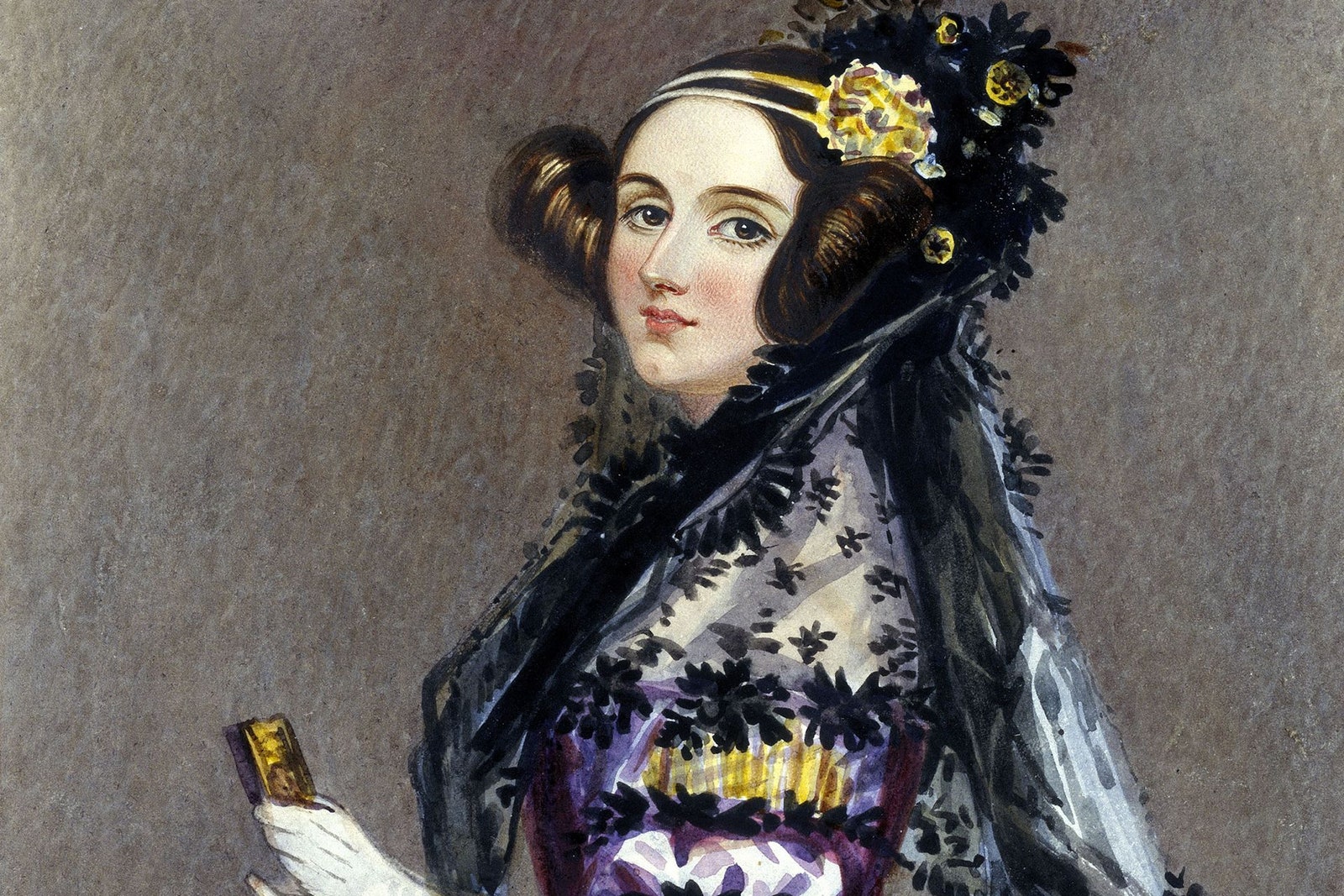
Enchantress of Numbers, daughter of the Princess of Parallelograms—Ada Lovelace and her mathematically inclined mother were given many monikers that alluded to their penchant for formulae while reminding them of their rightful place within Victorian patriarchy.
The daughter of Romantic poet Lord Byron and aristocrat Annabella Millbanke was afforded many educational opportunities that were unattainable to women of less privilege. Her mother pushed her towards mathematics and the sciences early on, a rare path for women, but one she hoped would keep her daughter from following the less rational footsteps of her poet father.
As a teenager, Lovelace met Cambridge mathematics professor Charles Babbage, who was busy at work developing the Analytical Engine, a mechanical precursor to computers relying on punch cards for input and output. Babbage was impressed by her wit and grasp of mathematics, and even called on her to translate a transcript of one of his lectures from French to English. In doing so, it became apparent that she not only understood Babbage’s machine as well as the inventor himself, but also had her own ideas to add.
Lovelace proved she had a larger grasp on numbers and how they could not only represent quantities, but also manipulate the data they represented. She created an input code that would produce Bernoulli numbers, and thus the first computer programmer was born.
Far from a historical footnote, Lovelace is something of a patron saint of women in STEM to this day. In 2009, Imperial College London held its first Ada Lovelace Day on October 15th, paying tribute to the mathematician by turning the spotlight on women around the world who have made significant contributions to math and science.
“One of the biggest parts of the problem was that women in tech are often invisible,” explained Suw Charman-Anderson, when asked why she founded Ada Lovelace Day. While women held 34% of jobs in STEM fields in 1990, that stake dwindled to 27% by 2011. Charman-Anderson and like-minded women hope that bringing awareness to pioneers like Lovelace can help reverse the alarming trend of decreased female participation in mathematical and scientific fields, and make STEM more accessible for generations of women to come.
